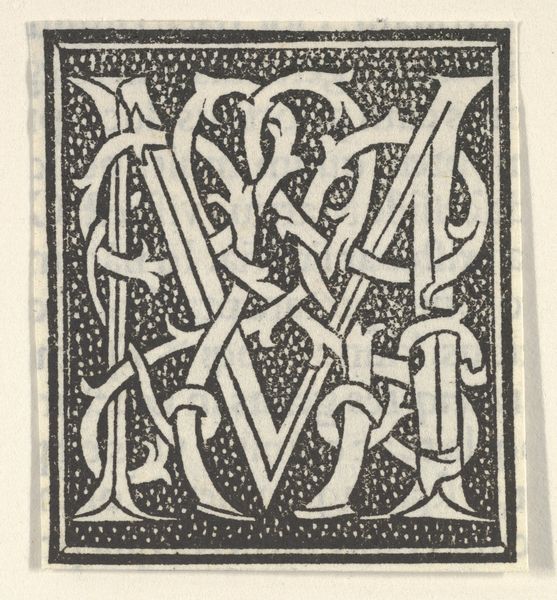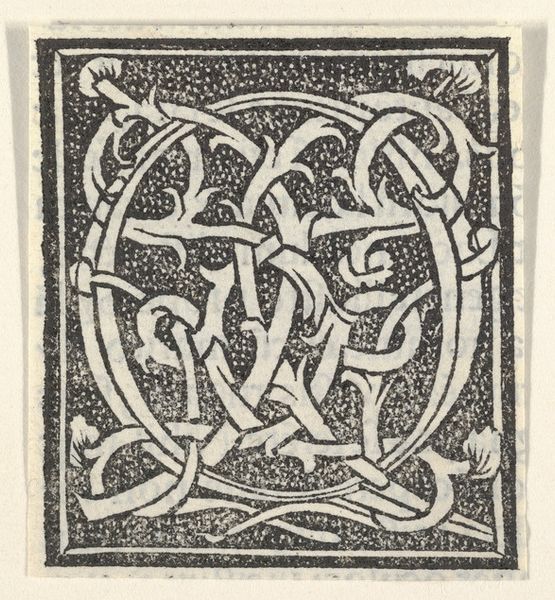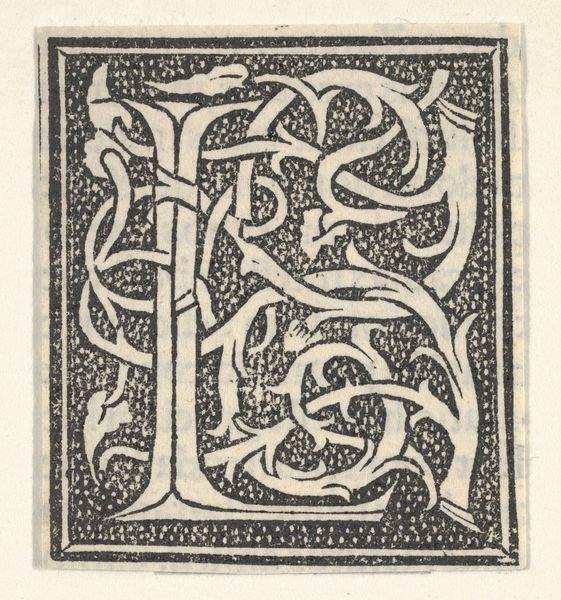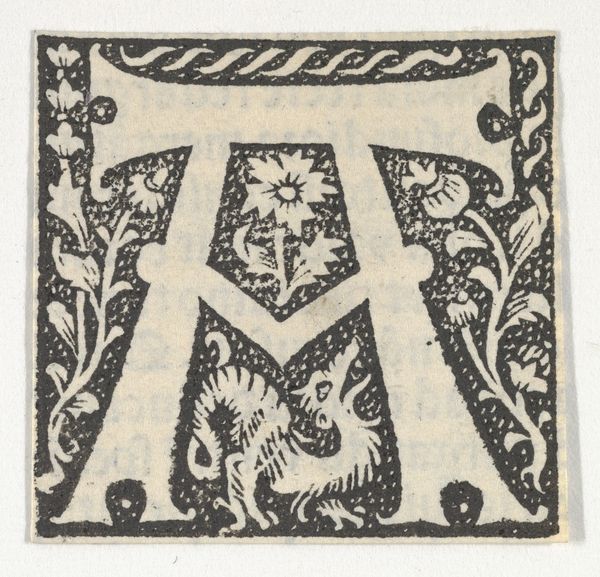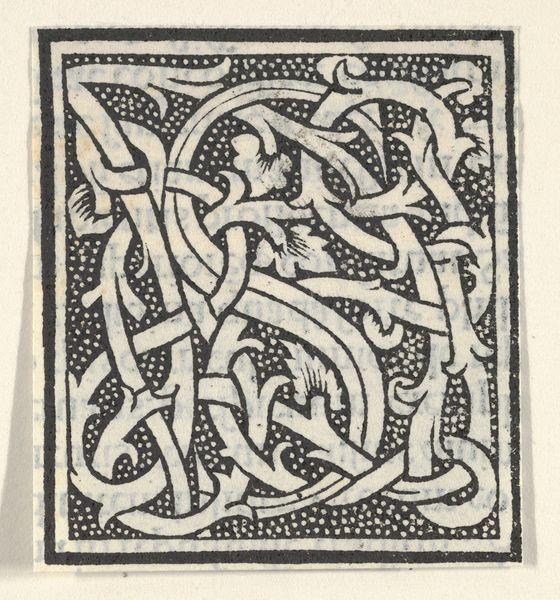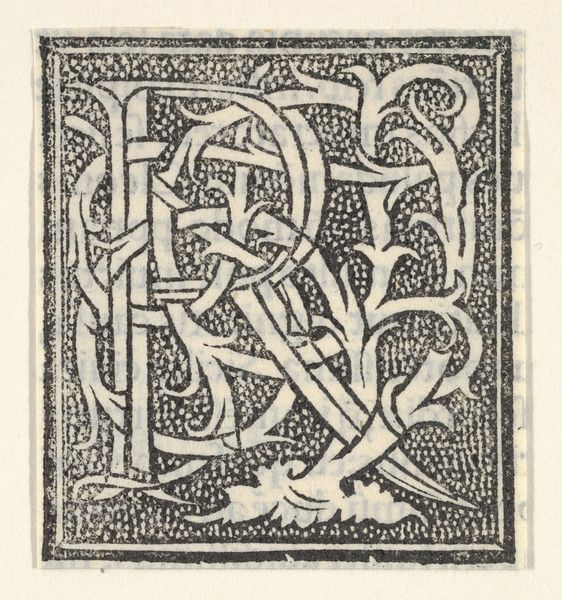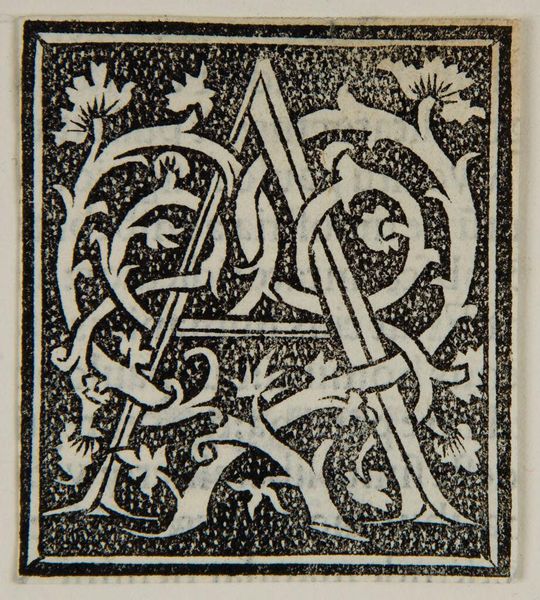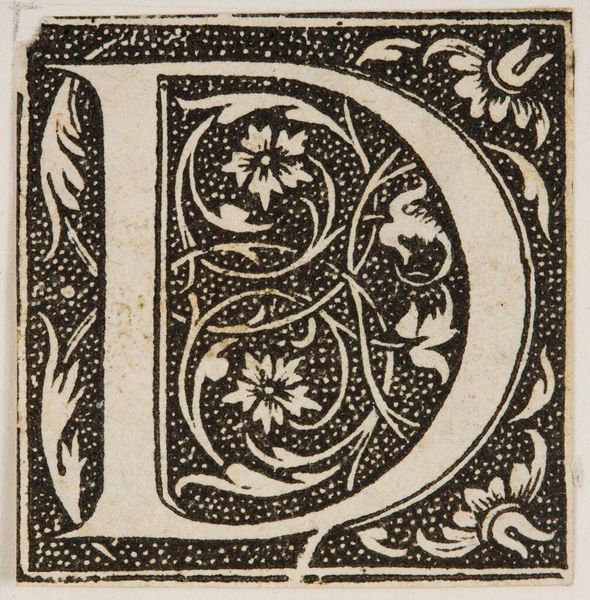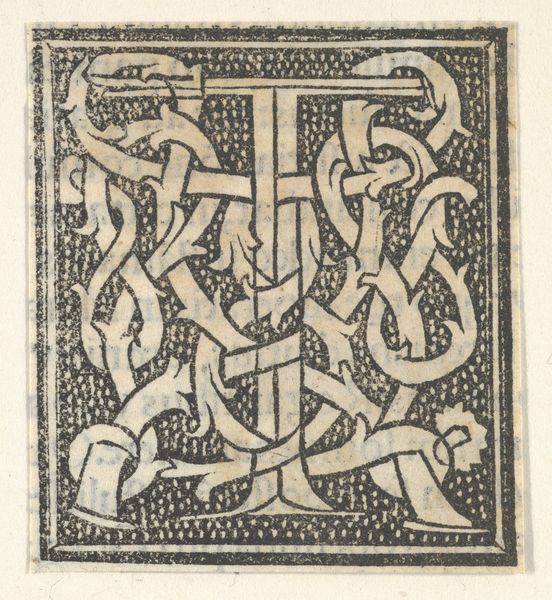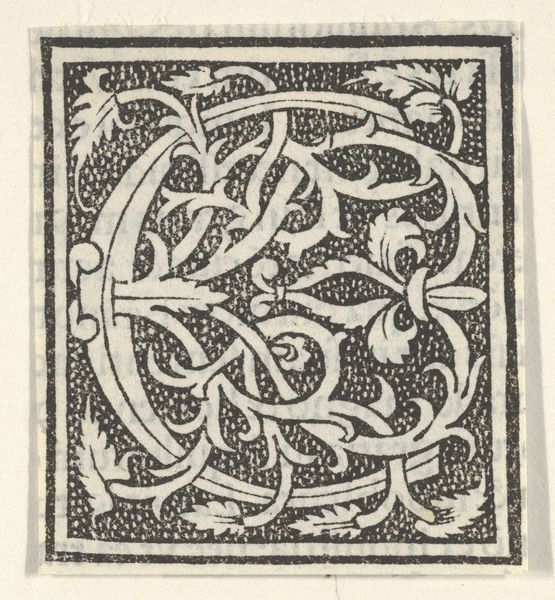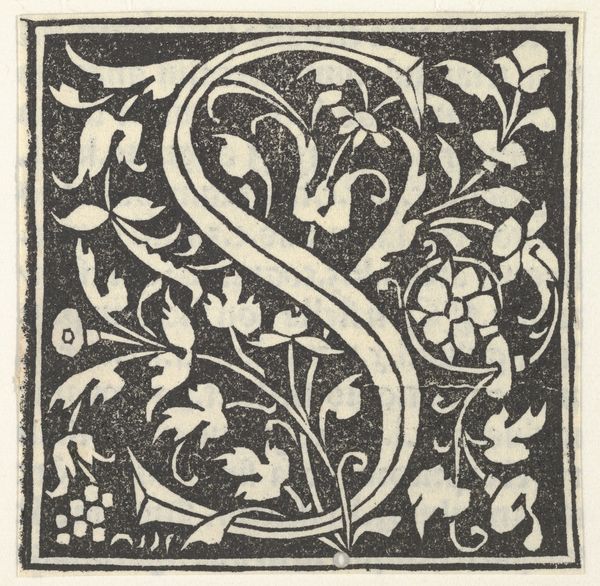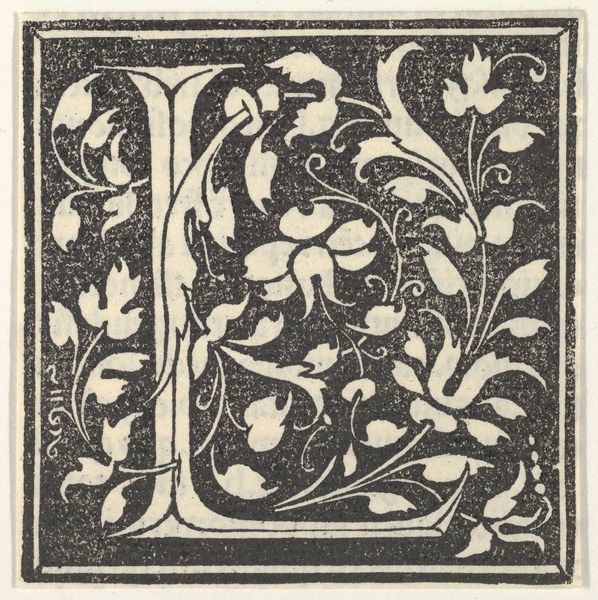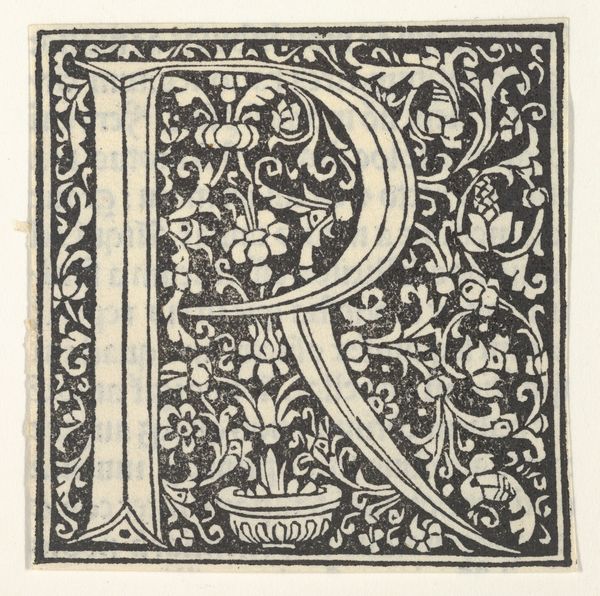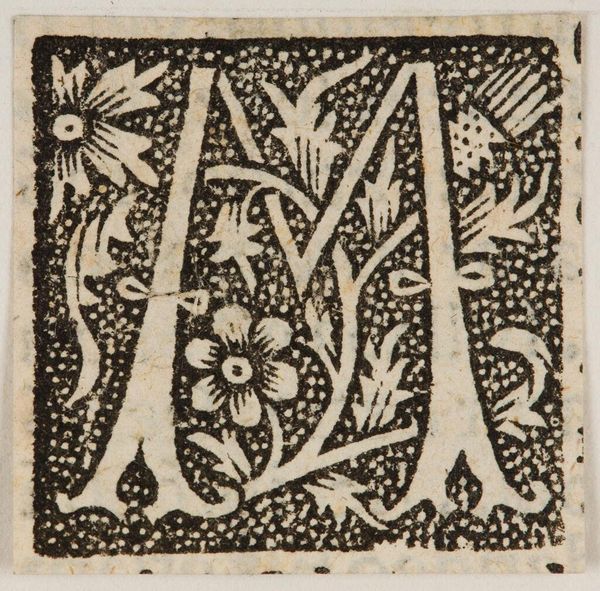
drawing, graphic-art, print, typography, woodcut
#
drawing
#
graphic-art
#
medieval
# print
#
woodcut effect
#
typography
#
geometric
#
woodcut
#
northern-renaissance
Dimensions: Sheet: 1 7/8 × 1 7/8 in. (4.7 × 4.7 cm)
Copyright: Public Domain
Curator: This woodcut, crafted around 1520 by an anonymous artist, now resides in the Metropolitan Museum of Art. Titled "Initial letter A on patterned background," it exemplifies the graphic arts of the Northern Renaissance. Editor: It has such a powerful presence for something so compact. The high contrast and bold geometric forms really jump out. There is a real dynamism to it despite the static subject matter. Curator: Indeed. The "A" is not merely a letter, but a symbol imbued with layers of meaning. It could represent a person, a place, or perhaps even a religious concept. Remember, in medieval and Renaissance times, letters were not just for reading; they carried emotional and spiritual significance. Editor: I agree. And the patterned background of floral motifs seems almost to swallow the letter whole. The organic shapes battling for supremacy against the rigid form. It suggests a struggle between nature and culture. Do you think the artist used real flora? Curator: Likely stylized forms, echoing broader cultural fascinations with nature that we see in tapestries and illuminated manuscripts. The woodcut effect, I think, intensifies the image's archaic feel, reminding us of the origins of print and the spread of knowledge. Editor: You can really see the texture of the wood in the print—it’s not trying to be photorealistic, but embraces its materiality, which becomes central to its expression. Did prints of this sort have wide distribution at the time, in your understanding? Curator: The relatively low cost of producing woodcuts allowed for more accessibility of visual materials at this time, compared to painting. Meaning this print, though small, would have had the possibility of significant cultural impact. It probably offered a sense of authority to the texts where it appeared. Editor: So the visual power of this initial 'A' then served to elevate the text it introduced—creating an aesthetic and symbolic entryway for the reader. Thinking about this tiny graphic work as a doorway has transformed my viewing experience. Thank you. Curator: And thank you! Considering the social reach of such a simple design highlights how graphic forms can echo in unexpected ways across centuries.
Comments
No comments
Be the first to comment and join the conversation on the ultimate creative platform.
